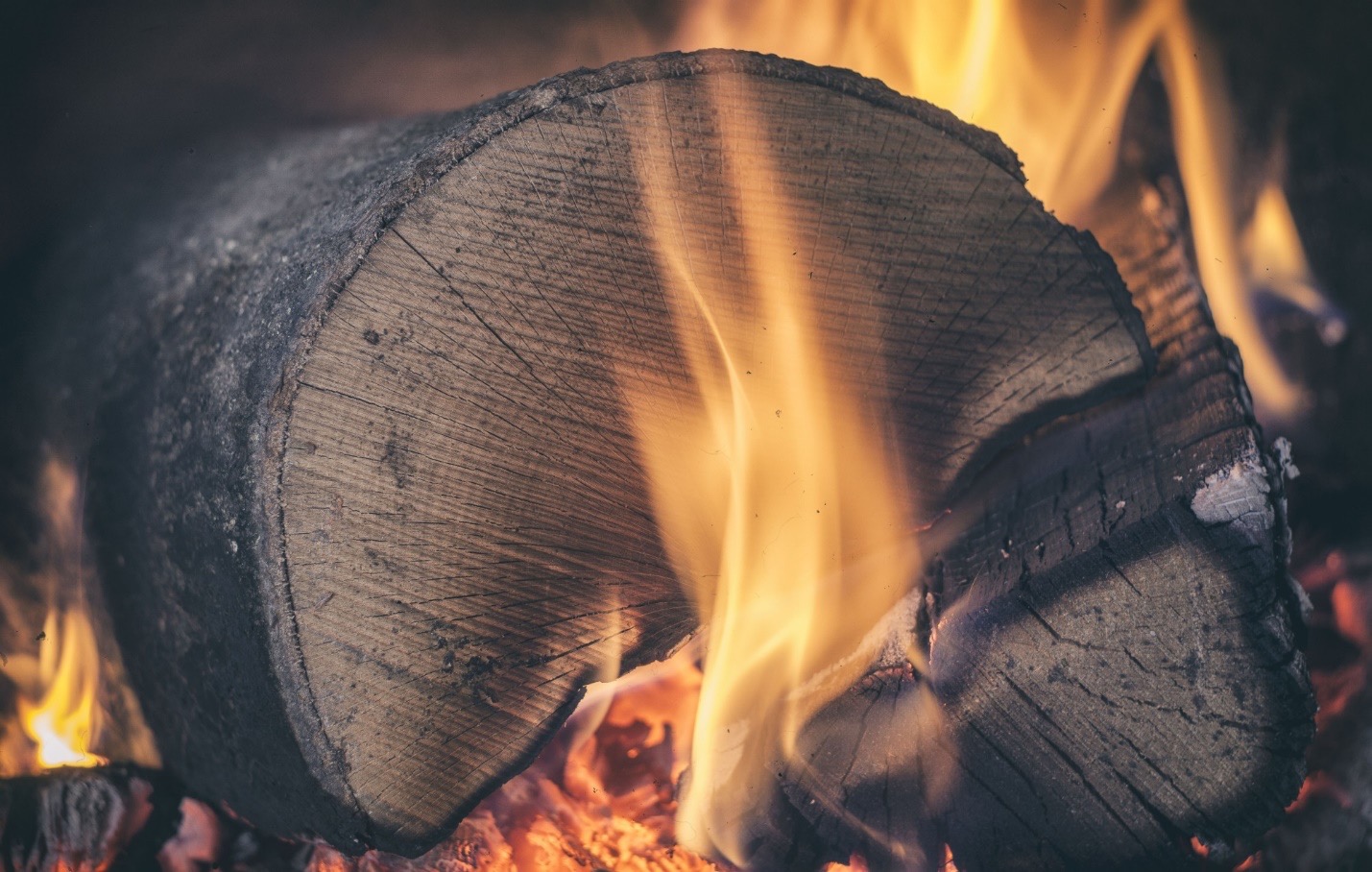Wondering which would wood you should choose? If that’s the case, here’s your guide to choosing the best firewood. Click here!
There’s nothing quite like curling up next to a crackling fire on a cold night. Whether that fire is at a campsite, or at your own home, there’s one thing both have in common: You need to use the right firewood to get the best results.
There are a lot of different options when it comes to firewood. So many so that it can be hard to pick the right option. If you’re not sure what kind of firewood you need to use, keep reading for a full breakdown.
The Best Types of Firewood
To start, let’s look at all the different types of firewood you might encounter. Not all types of wood make great firewood, and there are a variety of reasons why this might be. We’ll start with the best firewoods, then take a look at some of the worst.
Oak
Oak is one of the most common — and one of the best — types of firewood you can pick.
Oak burns long and slow thanks to its density, meaning a longer fire for a lot less wood. What’s more, oak is widely available across North America, where it grows in abundance. It has a longer seasoning time than other woods, but it all pays off thanks to the quality of the fire you’ll get when burning oak.
You can use oak for a wood-burning stove, a fireplace, or a campfire and find great satisfaction.
Ash
Ash offers a steady burn, and it’s one of the easier woods to split. You can get it into nice little pieces perfect for any wood stove or fireplace.
Ash grows in central and eastern North America. Ash burns nice and hot, and will even light when it’s green in most cases. You can fill a stove or fireplace with 100% ash without having to mix woods and expect a great burn.
Maple
Maple burns a lot like ash, giving you a steady, hot burn. It’s available all around the U.S., making it widely available.
On top of that, maple splits easily and has a lower density than other hardwoods like ash and oak. It also smells pretty great, for a nice bonus. Maple tends to season quickly, and you don’t want to let it sit around too long — it starts to smell pretty bad after too long.
Beech
While not as readily available as the three wood-types above, beech is a great firewood if you can get it.
You’ll mostly find beech trees in the northeast U.S. It’s fairly easy to split, with the occasional tough piece to deal with. It burns very hot and doesn’t produce a ton of sparks, making it great for campfires.
Beech also has the added bonus of non-flaky bark, meaning less of a mess when transporting it.
Hickory
Thanks to the density of hickory, you can expect a hot, long burn.
Hickory can be hard to split, though, because of its inherent strength. This is why it’s frequently used to make furniture and tools. It takes about a year to season, and can also be hard to start — but the results once started are great.
Apple
Apple wood is sturdy, high-quality wood that isn’t typically used for firewood but makes great firewood regardless.
Apple wood is best used for cooking and smoking meats, as the smoke gives the meat an apple-like taste. Apple wood burns hot and slow, meaning less wood for a longer burn. It’s a good choice for fireplaces, however, it can also be a bit hard to light.
The Worst Types of Firewood
Now, let’s consider some of the less-great options for firewood. Not all of these are terrible options — some may even have great advantages over the best firewood — however, they’re not the most recommended.
Cherry
The best thing about cherry is the amazing smell it gives off when it burns. Unfortunately, it’s not the best choice otherwise.
Cherry has a pretty low heat output, making it a weak choice most of the time. It will take a lot more cherry to heat your home than oak, for example. Cherry does produce very little smoke and sparks, though, which can be a major upside for some.
Cherry does split easily, and it produces pretty good coals. The low heat it gives off doesn’t make par, though.
Pine
Pine should not be used as firewood, plain and simple.
Pine has high resin and sap content, meaning it’s a pretty wet wood. This can make it hard to light for a long time, and also means weaker heat. However, pine is an okay option for kindling — if you need a firestarter and pine is all you’ve got, by all means use it.
It’s hard to split pine, especially because of the knots it typically has. It has a very smokey burn, making it a troubling choice for indoor fires. It also burns nowhere near as hot as a firewood like oak or ash.
Poplar
The main problem with poplar wood is how quickly it burns.
Poplar wood is very light, making it easy to split. However, that also means it doesn’t burn for long. You’ll need a lot of poplar to keep a fire going more than a couple hours.
Poplar does burn hot, though, despite its short lifespan. This makes it a potentially good choice for short campfires, but a bad choice for fireplaces. Poplar is best used when mixed with other types of wood.
Eucalyptus
Eucalyptus wood is very oily and has a high water content, making it less than ideal as firewood.
Eucalyptus wood has a long seasoning time (usually it takes around two years to season), and although it burns very hot (comparable to oak) it often burns too intensely, which can lead to fire hazards. Eucalyptus wood is difficult to split, especially when it’s dry — unfortunately, the wood needs to be dry to burn. Eucalyptus isn’t the worst wood, but it takes too much work to make it, well, work.
Hemlock
You should avoid burning the wood of the hemlock tree as hard as you can.
Hemlock wood is full of knots, making it a real pain to split. It doesn’t create any good coals, and creates a huge pile of ash. It lights up fast, making it okay if you need a quick outdoor fire, but it also tends to spark a lot, making it a bit of a hazard.
Hemlock burns hot, smells good, and cracks and pops a lot, so if you must use it it’s best for a well-controlled campfire.
Alder
Alder wood isn’t dense, meaning it burns out fast. You’ll need to keep refueling the fire more than you’d like.
Well-seasoned alder is usable as it creates good coals, but still suffers from fast burnout. It’s best mixed with other types of wood. Alder is easy to split, and it gives off a sweet smell when burning. Alder offers about 17.5 million BTUs of heat, so it’s not the hottest option by far.
Alder is okay if mixed with other woods, and okay on its own in a pinch. Be warned though, you’re going to need a lot of it for a substantial fire.
How to Season Firewood
If you’re a firewood novice, you’re probably wondering after reading all that: What does seasoning mean? And how do I season my firewood?
Seasoning firewood is, essentially, the process of waiting to use the wood. Fresh-cut wood is full of moisture, making it hard or even impossible to burn. If you do get unseasoned wood to burn, it creates a lot more smoke than seasoned wood.
The more smoke your wood produces, the dirtier your chimney gets. This can also cause trouble on campsites. By seasoning your wood, not only will it burn better, it’ll also burn easier, and get lighter thanks to the reduced moisture levels.
To season your wood, you want to cut it into roughly equal-sized pieces so they stack well. Sections about 16″ should do. Once the wood is cut up, stack it along a fence, against a shed or barn, or on a log rack.
You want to stack your seasoning wood somewhere with air circulation to best age it and remove the moisture. After that, all you have to do is wait. Different types of wood season at different times, so make sure to do some research on the type of wood and when to stop seasoning it.
How to Stack Firewood
Stacking firewood is simple, especially if it’s all in one uniform size.
You’ll want to stack your firewood against something to keep it from slipping and falling over. The easiest option is using a firewood rack, but you can also stack it against a fence or wall. Put the butt-end of the wood against the wall, so the wood is sticking lengthwise out from the wall.
You can cut the firewood into logs, or split those logs in half if you want to stack using a flat end. This makes for a more solid stack most of the time.
You should avoid stacking different types of wood together as different woods season at different rates. Organization is always important when stacking wood.
The Heat Value of Firewoods
Oftentimes — especially for heating purposes — the best firewood is also the firewood that burns the hottest.
Firewood is commonly measured by cord in BTUs, which stands for British Thermal Units. BTU refers to how much energy it takes to heat a pound of water by a single degree Fahrenheit. So, when looking at firewood BTUs, we’re seeing how much heat is typically output by a single cord of firewood.
Oak comes in at the highest BTUs per cord, at nearly 30-million BTUs per cord. Beech comes in a close second at around 27-million, with apple wood coming in just below that.
Maple comes in at a little over 25-million BTUs, with birch barely coming in over 20-million. Cherry lies slightly below birch, with ash coming in just below 20-million. Elm is considered the exact same level as ash.
Cedar has the lowest BTUs, coming in at around 13-million BTUs per cord. Spruce is just over 15-million, while pine sits at about 16-million BTUs. Alder is closer to 17-million BTUs.
So, if you’re looking for the hottest-burning firewood, go with Oak, beech, or apple. At all costs, avoid cedar, spruce, and pine.
How Much Is a Cord of Firewood?
To best understand the BTU numbers above, it helps to understand how much firewood makes up a cord.
One cord of firewood is typically 128 cubic feet. That’s about 4 feet high and wide, and 8 feet long. A cord does differ between firewood types, though. Some firewood cords may measure as low as 85 cubic feet.
Where to Buy Firewood
Now that you know a bit more about the best types of firewood, you’re probably saying, “I need to know where to buy firewood near me!” Fear not — we’ve got the answer.
If you’re living in the UK and want quality firewood delivered direct to your address, look no further than Buy Firewood Direct. They have all the best types of firewood and UK Woodsure Certified Kiln Dried Logs for whatever you need. Whether you’re cooking, camping, or heating your home, you can trust Buy Firewood Direct.
Only Use the Best Firewood
To get the best burn and the best bang for your buck, only burn the best firewood.
Familiarize yourself with this helpful guide, and avoid the worst firewoods as often as possible. If you want smoke use a heavy-smoking firewood, and if you want heat use a high-BTU firewood. The best firewood for one person will not be the best firewood for another, so experiment and find the best firewood for you.
For more articles on architecture, homes, and celebrity life, check out the rest of our website.




